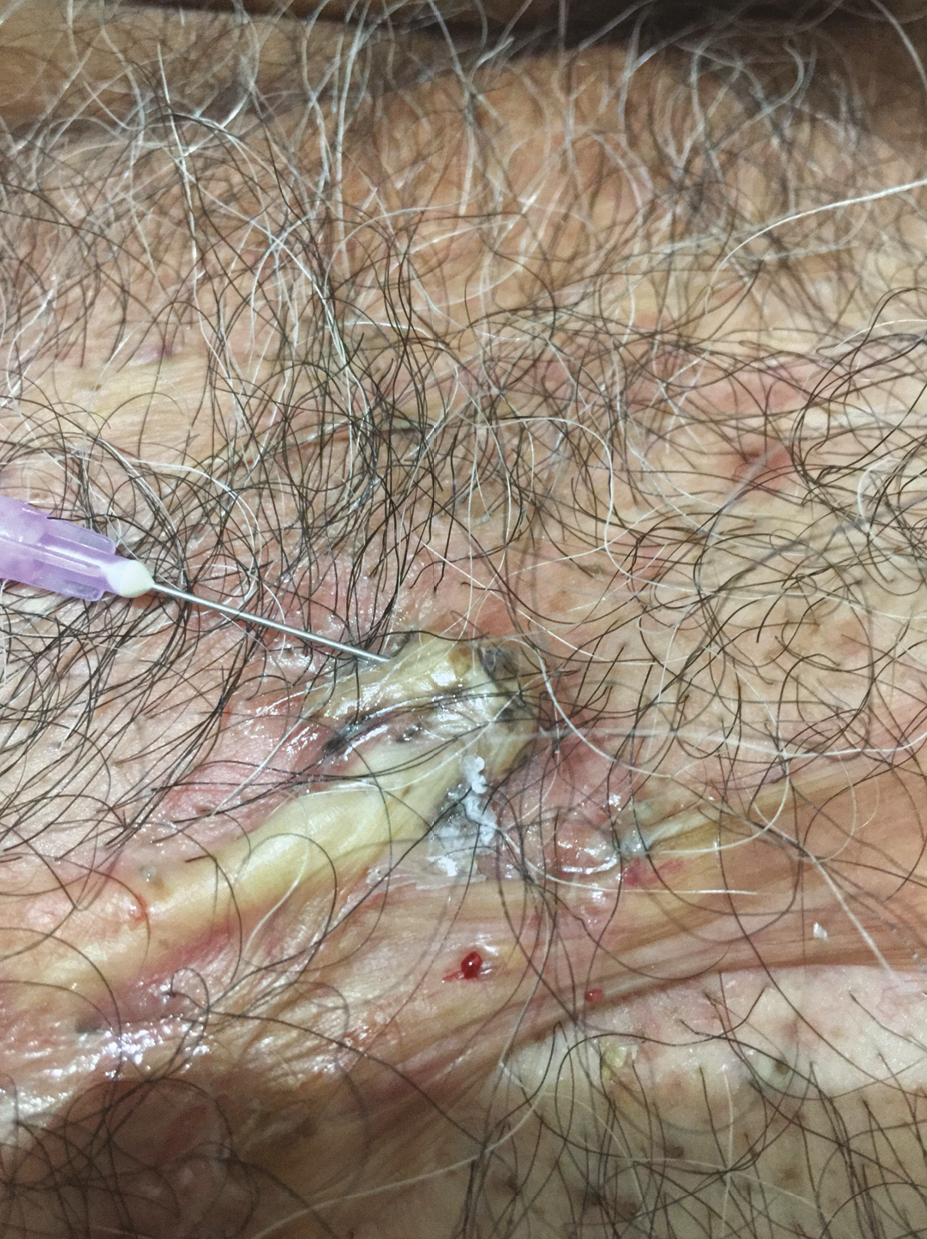Translate this page into:
Sealing of Follicular Openings in Keloid with Cyanoacrylate Glue for Effective Intralesional Therapy
Address for correspondence: Dr. Muhammed Mukhtar, Mukhtar Skin Centre, Katihar Medical College Road, Katihar 854105, Bihar, India. E-mail: drmmukhtar20@gmail.com
This article was originally published by Wolters Kluwer - Medknow and was migrated to Scientific Scholar after the change of Publisher.
Abstract
Abstract
Intralesional therapy is a common treatment for keloid. However, because of some follicular openings and comedones on the surface of the keloid on the hairy chest and acne keloidalis, there is a risk of drug leakage, and sometimes ejection of drugs like a jet spray leads to therapy being ineffective. The authors describe a novel and effective method for preventing drug loss from follicular openings during intralesional therapy. To prevent drug loss during intralesional injection, cyanoacrylate glue is applied to the follicular and comedone openings on the keloid’s surface.
Keywords
Cyanoacrylate glue
follicular openings
hemostasis
intralesional therapy
jet spray
keloids
leakage
sealing
CHALLENGE
In dermatology, intralesional injection therapy is a common treatment for keloid.[12] However, because of some follicular openings and comedones on the surface of the keloid on the hairy chest and acne keloidalis, there is a risk of drug leakage, and sometimes ejection of drugs like a jet spray leads to therapy being ineffective. The authors describe a novel and effective method for preventing drug loss from follicular openings during intralesional therapy.
SOLUTION
To prevent drug loss during intralesional injection, cyanoacrylate glue is applied to the follicular and comedone openings on the keloid’s surface [Figure 1]. After 3–5 min, the glue cures, hardens, and seals the openings. Following that, the injection is given into the keloid tissue with a Leur lock syringe without any drug leakage from the follicular opening. For the bleeding at the injection sites after the injection therapy, hemostasis is achieved with cyanoacrylate glue [Figure 2]. Thus, cyanoacrylate glue is a novel and effective use for effective intralesional therapy of keloid with hemostasis. Cyanoacrylate is a nonirritant, nonallergenic US Food and Drug Administration (FDA) proven adhesive glue having antibacterial, antiseptic, dehydrating (moisture absorber due to exothermic heat production), and sealing properties. In general, the glue remains on the skin for 4–5 days. Usually within a week, it gets dislodged from the follicular openings and skin surface without much effort during taking a bath. There is no incidence of secondary bacterial infection or any adverse effects of the glue seen at the sites. If necessary, the glue can be dissolved or easily removed using an acetone solution.

- Intralesional injection is given after sealing of follicular openings and comedones on the surface of keloid with cyanoacrylate glue

- The post bleeding from injection pricks that are sealed with the glue
Declaration of patient consent
The authors certify that they have obtained all appropriate patient consent forms. In the form the patient(s) has/have given his/her/their consent for his/her/their images and other clinical information to be reported in the journal. The patients understand that their names and initials will not be published and due efforts will be made to conceal their identity, but anonymity cannot be guaranteed.
Financial support and sponsorship
Nil.
Conflicts of interest
There are no conflicts of interest.
REFERENCES
- Intralesional drug therapy in dermatology. Indian J Dermatol Venereol Leprol. 2017;83:127-32.
- [Google Scholar]
- Creating a guard with a needle cover to control the depth of intralesional injections. J Am Acad Dermatol. 2016;75:e67-8.
- [Google Scholar]






